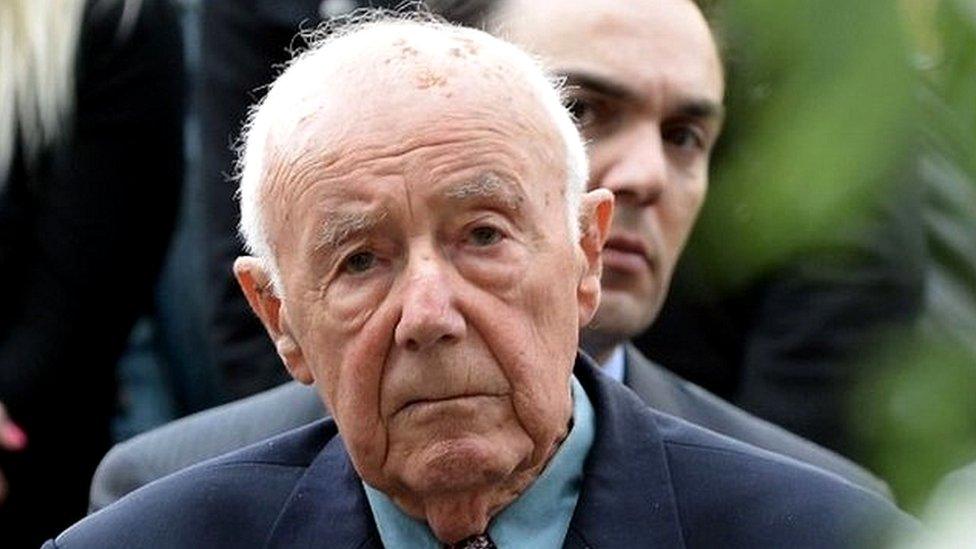Virtual reality Holocaust: WW2 survivor 'impressed' by recreation
- Published

The researchers based their recreation on other photos taken on the same few days
A Holocaust survivor who stepped back in to a Nazi ghetto thanks to virtual reality said it "brings it home".
Martin Stern, 81, was one of the first to experience what is believed to be a unique exhibit.
Researchers have turned a photo of the 1943 liquidation of the Warsaw Ghetto in to virtual reality (VR), allowing visitors to look around inside it.
Mr Stern said he hopes it will better engage young people and make them ask questions.
The retired physician, who now lives in Leicester, spent months in Theresienstadt as a child, a ghetto and transit camp in what was then Nazi-controlled Czechoslovakia.
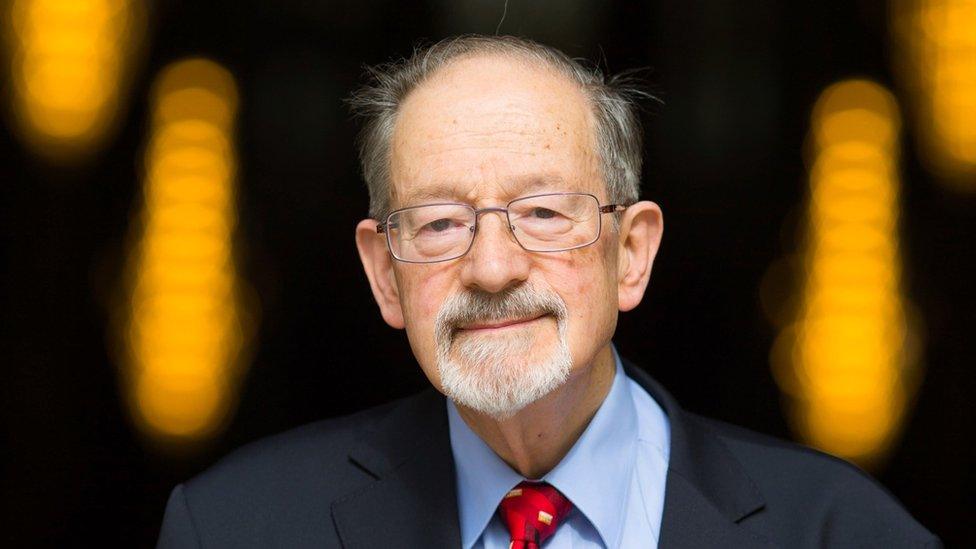
Martin Stern believes young people are the most important audience to reach but they may find black and white photos "boring".
He was asked to try the virtual reality while it was being developed and said: "I was very impressed, it's amazingly real.
"Years ago I went to an Anne Frank exhibit in Leicester where a group of young Jewish boys were being shown round - it was just black and white photos pinned up and they were yawning.
"For a new generation, you need to talk to them in the language they are using. Being surrounded by the VR brings it home."
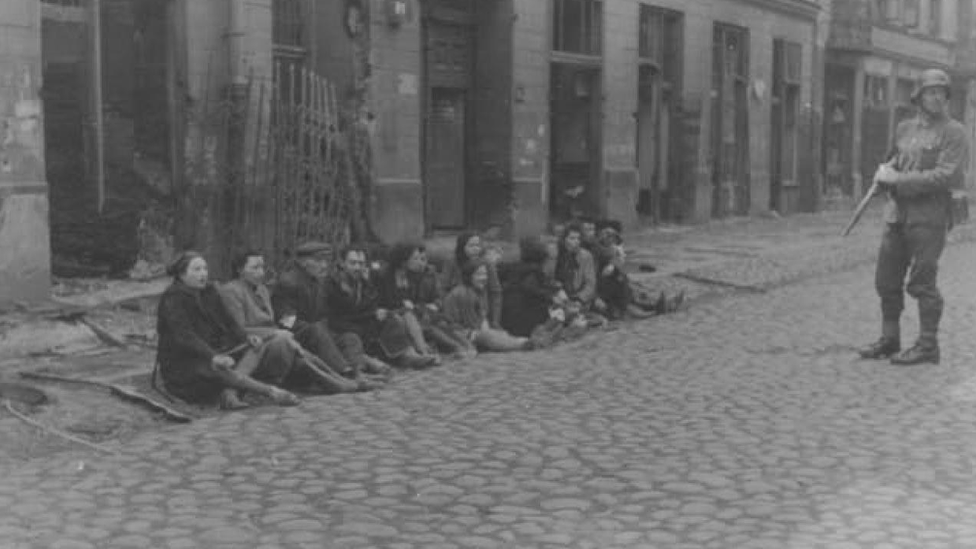
The VR imagery is based on a photograph from the Warsaw Ghetto
It is part of the Eye As Witness: Recording the Holocaust exhibit created by the University of Nottingham and the National Holocaust Centre and Museum.
The original image, taken for Nazis propaganda purposes, shows a group sitting on a kerb watched over by a soldier but thanks to the VR goggles, viewers can also see what may have been happening beyond the frame.
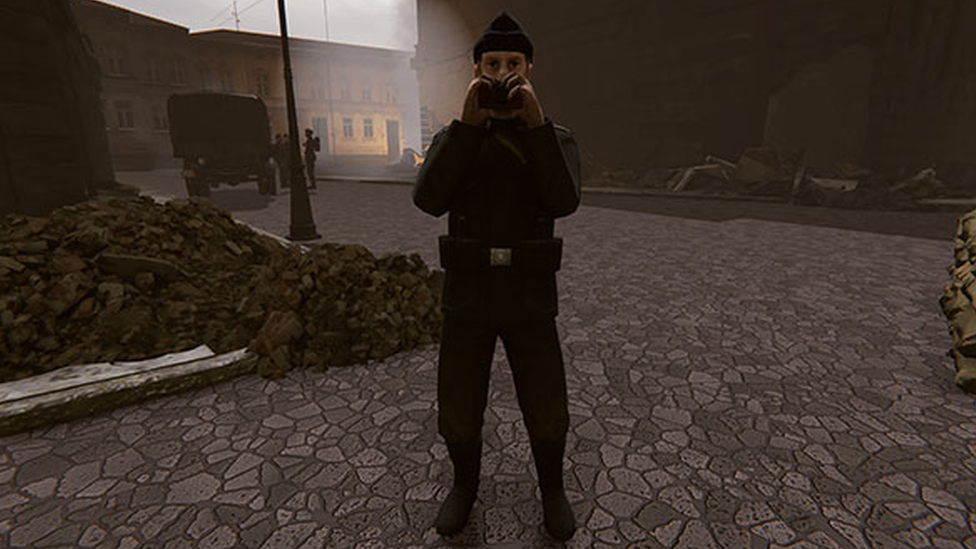
According to Professor Umbach some users felt like punching the photographer after trying on the VR
Professor Maiken Umbach, from the university, said: "The VR is an invitation to contemplate what choices the photographer made, what might have been left out."
For example as eyewitnesses told them there were many more soldiers than shown in photos.
Professor Umbach added they did not want to use the VR "voyeuristically" by showing too much violence and they had deliberately chosen not to make the image too realistic.
She said the aim is to make people think critically about photos from past or current events rather than feel they had "gone back" to the Holocaust.
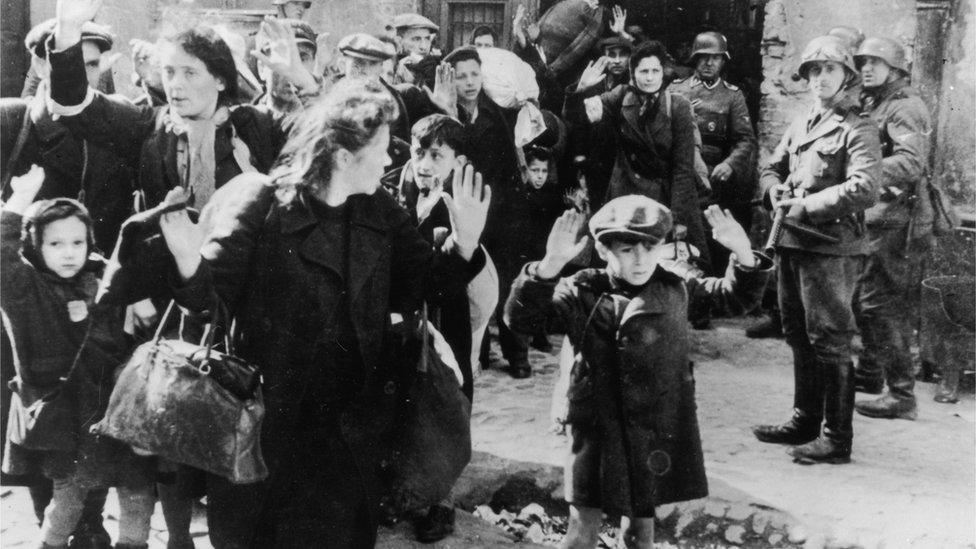
Some of the most famous images of the Holocaust were taken for German propaganda purposes, according to Professor Umbach
The exhibition will be touring a number of venues from Monday until 24 March 2021.

Follow BBC East Midlands on Facebook, external, Twitter, external, or Instagram, external. Send your story ideas to eastmidsnews@bbc.co.uk, external.
- Published22 July 2012
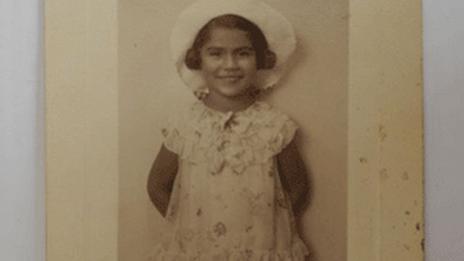
- Published22 December 2018
